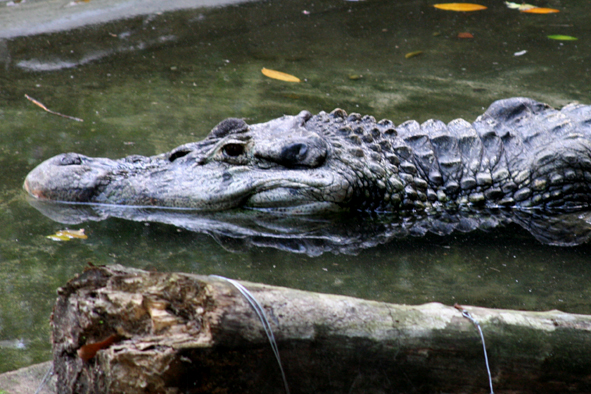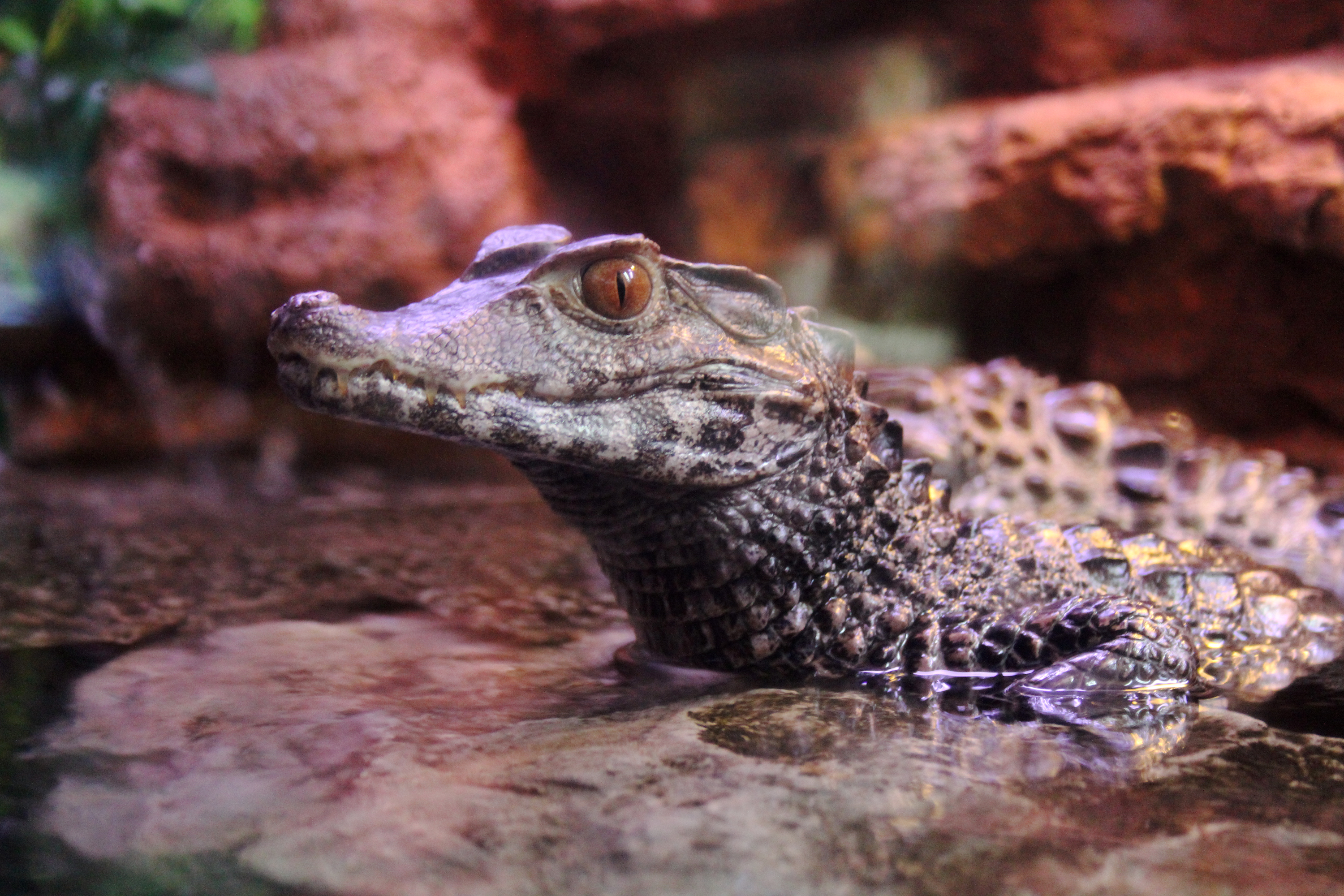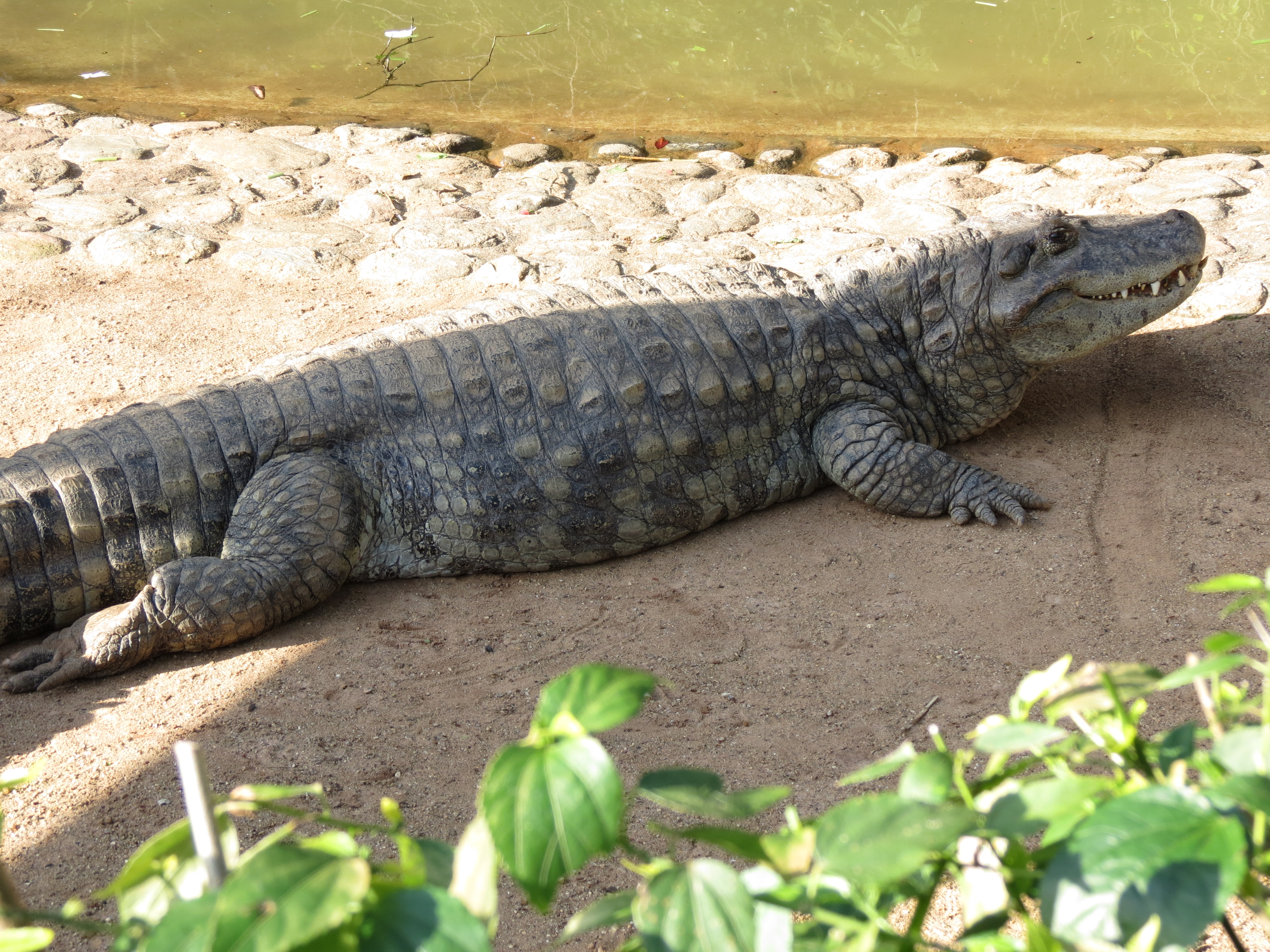Caimen on:
[Wikipedia]
[Google]
[Amazon]
A caiman (also cayman as a variant spelling) is an 





alligatorid
The family Alligatoridae of crocodylians includes alligators, caimans and their extinct relatives.
Phylogeny
The superfamily Alligatoroidea includes all crocodilians (fossil and extant) that are more closely related to the American alligator t ...
belonging to the subfamily Caimaninae, one of two primary lineages within the Alligatoridae
The family Alligatoridae of crocodylians includes alligators, caimans and their extinct relatives.
Phylogeny
The superfamily Alligatoroidea includes all crocodilians (fossil and extant) that are more closely related to the American alligator ...
family
Family (from la, familia) is a group of people related either by consanguinity (by recognized birth) or affinity (by marriage or other relationship). The purpose of the family is to maintain the well-being of its members and of society. Idea ...
, the other being alligator
An alligator is a large reptile in the Crocodilia order in the genus ''Alligator'' of the family Alligatoridae. The two extant species are the American alligator (''A. mississippiensis'') and the Chinese alligator (''A. sinensis''). Additiona ...
s. Caimans inhabit Mexico
Mexico (Spanish: México), officially the United Mexican States, is a country in the southern portion of North America. It is bordered to the north by the United States; to the south and west by the Pacific Ocean; to the southeast by Guatema ...
, Central and South America
South America is a continent entirely in the Western Hemisphere and mostly in the Southern Hemisphere, with a relatively small portion in the Northern Hemisphere at the northern tip of the continent. It can also be described as the sout ...
from marshes and swamps to mangrove rivers and lakes. They have scaly skin and live a fairly nocturnal existence. They are relatively small-sized crocodilia
Crocodilia (or Crocodylia, both ) is an order of mostly large, predatory, semiaquatic reptiles, known as crocodilians. They first appeared 95 million years ago in the Late Cretaceous period ( Cenomanian stage) and are the closest livi ...
ns with an average maximum weight of depending on species, with the exception of the black caiman (''Melanosuchus niger''), which can grow more than in length and weigh in excess of 1,000 kg (2,200 Ib). The black caiman is the largest caiman species in the world and is found in the slow-moving rivers and lakes that surround the Amazon basin. The smallest species is the Cuvier's dwarf caiman
Cuvier's dwarf caiman (''Paleosuchus palpebrosus'') is a small crocodilia
Crocodilia (or Crocodylia, both ) is an order of mostly large, predatory, semiaquatic reptiles, known as crocodilians. They first appeared 95 million years ago ...
(''Paleosuchus palpebrosus''), which grows to long. There are six different species of caiman found throughout the watery jungle habitats of Central and Southern America. The average length for most of the other caiman species is about long.
Caimans are distinguished from alligators, their closest relatives, by a few defining features: a lack of a bony septum between the nostrils, ventral armor composed of overlapping bony scutes formed from two parts united by a suture, and longer and sharper teeth than alligators, plus caimans tend to be more agile and crocodile-like in their movements. The calcium rivets on caiman scales make their hides stiffer and thus less valuable than those of alligators and crocodiles, both of which have a similar appearance, but are more pliable.
Several extinct forms are known, including ''Purussaurus
''Purussaurus'' is an extinct genus of giant caiman that lived in South America during the Miocene epoch, from the Friasian to the Huayquerian in the SALMA classification. It is known from skull material found in the Brazilian and Peruvian Amazo ...
'', a giant Miocene
The Miocene ( ) is the first epoch (geology), geological epoch of the Neogene Period and extends from about (Ma). The Miocene was named by Scottish geologist Charles Lyell; the name comes from the Greek words (', "less") and (', "new") and mea ...
genus that grew to and the equally large ''Mourasuchus
''Mourasuchus'' is an extinct genus of giant, aberrant caiman from the Miocene of South America. Its skull has been described as duck-like, being broad, flat, and very elongate, superficially resembling '' Stomatosuchus'' from the Late Cretaceo ...
'', which had a wide duck
Duck is the common name for numerous species of waterfowl in the family Anatidae. Ducks are generally smaller and shorter-necked than swans and geese, which are members of the same family. Divided among several subfamilies, they are a form ...
-like snout.




Behavior
Caimans are predators and, like alligators and crocodiles, their diet largely consists of fish. Caimans also hunt insects, birds, and small mammals and reptiles. Due to the large size and ferocious nature of caimans, they have few natural predators within their environments. Humans are the main predators of caimans, as they have been hunted for their meat and skin. Jaguars,anacondas
Anacondas or water boas are a group of large snakes of the genus '' Eunectes''. They are found in tropical South America. Four species are currently recognized.
Description
Although the name applies to a group of snakes, it is often used to r ...
and crocodiles
Crocodiles (family Crocodylidae) or true crocodiles are large semiaquatic reptiles that live throughout the tropics in Africa, Asia, the Americas and Australia. The term crocodile is sometimes used even more loosely to include all extant memb ...
are the only other predators of caimans, but they usually prey on the smaller specimens. During summer or droughts, caimans may dig a burrow and go into a form of summer hibernation called aestivation.
Female caimans build a large nest in which to lay their eggs. These nests can be more than wide. Female caimans lay between 10 and 50 eggs, which hatch within about six weeks. Once they have hatched, the mother caiman takes her young to a shallow pool of water, where they can learn how to hunt and swim.
Phylogeny
Caimaninae iscladistically
Cladistics (; ) is an approach to biological classification in which organisms are categorized in groups ("clades") based on hypotheses of most recent common ancestry. The evidence for hypothesized relationships is typically shared derived char ...
defined as ''Caiman crocodylus'' (the spectacled caiman) and all species closer to it than to ''Alligator mississippiensis'' (the American alligator
The American alligator (''Alligator mississippiensis''), sometimes referred to colloquially as a gator or common alligator, is a large crocodilian reptile native to the Southeastern United States. It is one of the two extant species in the gen ...
). This is a stem-based definition for caimaninae, and means that it includes more basal extinct caimanine ancestors that are more closely related to living caimans than to alligators
An alligator is a large reptile in the Crocodilia order in the genus ''Alligator'' of the family Alligatoridae. The two extant species are the American alligator (''A. mississippiensis'') and the Chinese alligator (''A. sinensis''). Additionall ...
.
Below is a cladogram
A cladogram (from Greek ''clados'' "branch" and ''gramma'' "character") is a diagram used in cladistics to show relations among organisms. A cladogram is not, however, an evolutionary tree because it does not show how ancestors are related to ...
showing the phylogeny
A phylogenetic tree (also phylogeny or evolutionary tree Felsenstein J. (2004). ''Inferring Phylogenies'' Sinauer Associates: Sunderland, MA.) is a branching diagram or a tree showing the evolutionary relationships among various biological spe ...
of Caimaninae, modified from Hastings ''et al.'' (2013).
Taxonomy
* Subfamily Caimaninae ** Genus †''Acresuchus
''Acresuchus'' ("Acre crocodile") is an extinct monospecific genus of medium-sized caiman from the Late Miocene of western Brazil andVenezuela. The genus contains a single species, ''Acresuchus pachytemporalis''. ''Acresuchus'' is a close relativ ...
''
**Genus †'' Brachychampsa''
** Genus †'' Bottosaurus''
** Genus †'' Centenariosuchus''
** Genus †'' Chinatichampsus''
** Genus †''Protocaiman
''Protocaiman'' is a caimanine genus of crocodylian first described in 2018. The type species ''Protocaiman peligrensis'' was discovered in Argentina's Salamanca Formation, and lived in Patagonia during the Paleocene
The Paleocene, ( ) or Pa ...
''
** Genus †'' Kuttanacaiman''
** Genus †''Gnatusuchus
''Gnatusuchus'' is an extinct genus of caiman represented by the type species ''Gnatusuchus pebasensis'' from the Middle Miocene Pebas Formation of Peru. ''Gnatusuchus'' lived about 13 million years ago (Ma) in a large wetland system called t ...
''
** Genus †'' Culebrasuchus''
** Genus †''Eocaiman
''Eocaiman'' is an extinct genus of caiman containing species living from the Early Paleocene to Miocene in what is now Argentina (Salamanca Formation, Salamanca and Sarmiento Formations), Itaboraí Formation of Brazil and Colombia (Honda Group, ...
''
** Genus †''Globidentosuchus
''Globidentosuchus'' is an extinct genus of basal caimanine crocodylian known from the late Middle to Late Miocene of the Middle and the Upper Members of the Urumaco Formation at Urumaco, Venezuela. Its skull was very short and robust, with l ...
''
** Genus ''Paleosuchus
''Paleosuchus'' is a South American genus of reptiles in the subfamily Caimaninae of the family Alligatoridae. They are the smallest members of the order Crocodilia in the Americas
The Americas, which are sometimes collectively called ...
''
*** ''P. palpebrosus'', Cuvier's dwarf caiman
Cuvier's dwarf caiman (''Paleosuchus palpebrosus'') is a small crocodilia
Crocodilia (or Crocodylia, both ) is an order of mostly large, predatory, semiaquatic reptiles, known as crocodilians. They first appeared 95 million years ago ...
*** ''P. trigonatus'', smooth-fronted caiman
The smooth-fronted caiman (''Paleosuchus trigonatus''), also known as Schneider's dwarf caiman or Schneider's smooth-fronted caiman,Purussaurus
''Purussaurus'' is an extinct genus of giant caiman that lived in South America during the Miocene epoch, from the Friasian to the Huayquerian in the SALMA classification. It is known from skull material found in the Brazilian and Peruvian Amazo ...
''
** Genus †''Mourasuchus
''Mourasuchus'' is an extinct genus of giant, aberrant caiman from the Miocene of South America. Its skull has been described as duck-like, being broad, flat, and very elongate, superficially resembling '' Stomatosuchus'' from the Late Cretaceo ...
''
** Genus †''Necrosuchus
''Necrosuchus'' is an extinct genus of caiman from modern day Argentina that lived during the Paleocene epoch (Selandian age, about 60 million years ago). It inhabited the fluvio-lacustrine environment of the Patagonian Salamanca Formation.
Hist ...
''
** Genus †'' Orthogenysuchus''
** Genus †'' Tsoabichi''
** Genus ''Caiman
A caiman (also cayman as a variant spelling) is an alligatorid belonging to the subfamily Caimaninae, one of two primary lineages within the Alligatoridae family, the other being alligators. Caimans inhabit Mexico, Central and South America f ...
''
*** ''C. yacare'', yacare caiman
The yacare caiman (''Caiman yacare''), also known commonly as the jacare caiman, Spanish yacaré, Paraguayan caiman, piranha caiman, red caiman, southern spectacled caiman, ''jacaré'' in Portuguese, and îakaré in Old Tupi, is a species of cai ...
*** ''C. crocodilus'', spectacled caiman
**** ''C. c. crocodilus'', spectacled caiman
**** ''C. c. apaporiensis'', Rio Apaporis caiman
**** ''C. c. fuscus'', Brown caiman
Brown is a color. It can be considered a composite color, but it is mainly a darker shade of orange. In the CMYK color model used in printing or painting, brown is usually made by combining the colors orange and black. In the RGB color model used ...
*** †''C. lutescens''
*** †'' C. venezuelensis''
*** †'' C. wannlangstoni''
*** †'' C. brevirostris''
*** ''C. latirostris'', broad-snouted caiman
** Genus ''Melanosuchus''
*** †'' M. fisheri''
*** ''M. niger'', black caiman
References
{{Taxonbar, from=Q478759 Alligatoridae Selandian first appearances Extant Selandian first appearances de:Kaimane mk:Кајмани